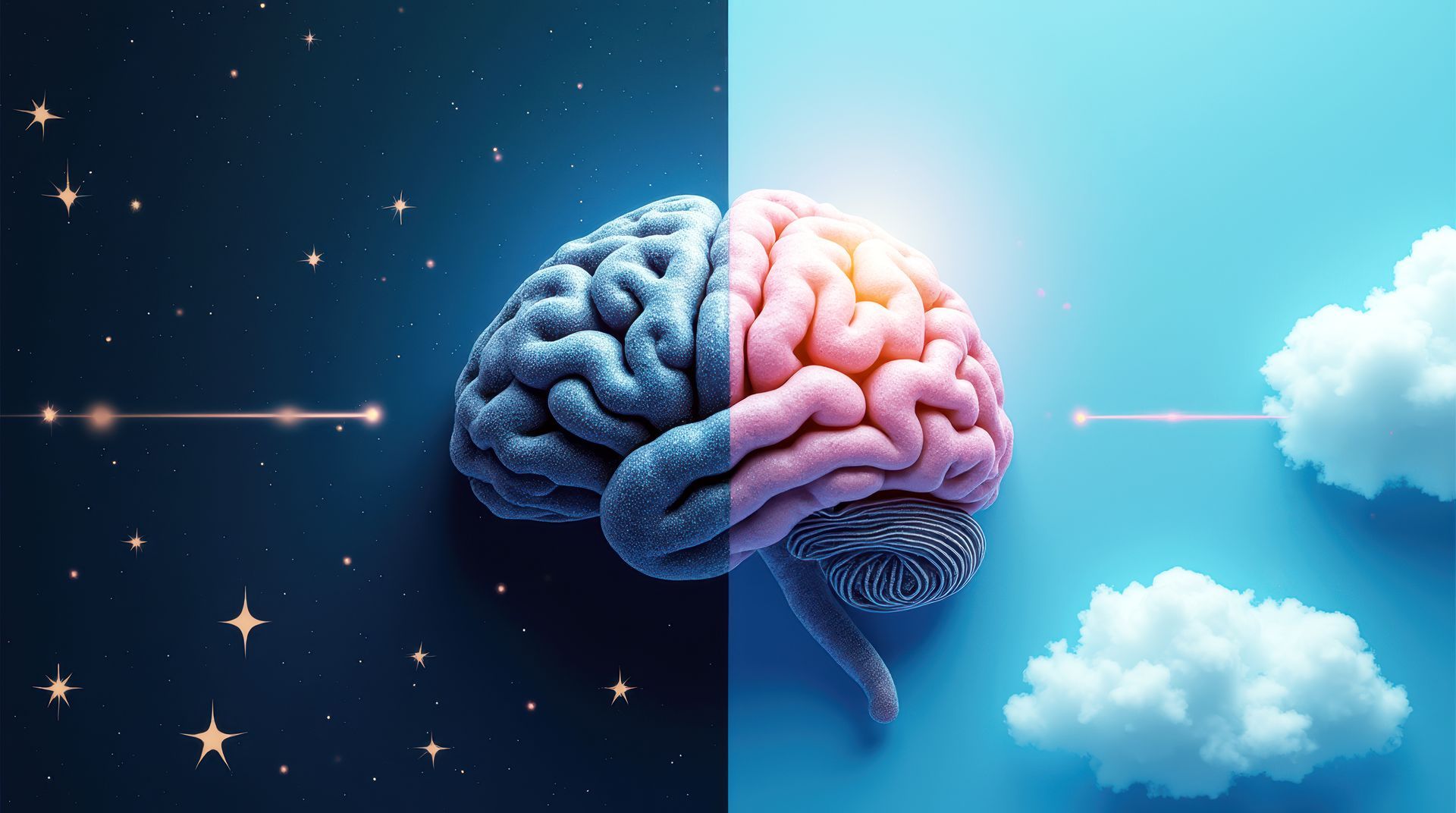Blue Light at Night: How It Impacts Your Sleep, Hormones, and Nervous System
The Modern Dilemma: Too Much Light, Too Late
In today’s world, our screens follow us everywhere. From smartphones and tablets to laptops and televisions, most of us are surrounded by artificial light well into the evening. While convenient, this constant exposure—especially to blue light—can have a deeper impact on your body than you might realize.
At Madewell Chiropractic, we often see patients struggling with fatigue, headaches, mood changes, or difficulty sleeping—issues that can often be traced back to disrupted nervous system function. One common culprit? Blue light at night.
What Is Blue Light?
Blue light is a high-energy wavelength naturally emitted by the sun. It plays an important role in regulating your circadian rhythm, the body’s internal clock that tells you when to feel awake and when to rest.
During the day, blue light helps you stay alert and focused. But after sunset, your body is meant to experience darkness, triggering the release of melatonin, the hormone that promotes sleep.
The problem arises when screens and artificial lighting continue to expose us to blue light long after the sun goes down—tricking the brain into thinking it’s still daytime.
How Blue Light Disrupts Sleep
When you scroll your phone or watch TV before bed, your brain receives mixed signals. Instead of winding down, it stays alert. This can cause:
- Delayed sleep onset — It takes longer to fall asleep.
- Reduced melatonin production — Your body produces less of the hormone needed for deep, restorative rest.
- Poor sleep quality — You may wake up frequently or feel unrested in the morning.
Over time, poor sleep can affect almost every system in the body—your mood, immune function, digestion, and ability to focus.
The Hormonal Ripple Effect
Sleep and hormones are closely linked. When your natural sleep rhythm is disrupted by blue light, your body’s hormone balance can become unstable.
- Cortisol, the stress hormone, may remain elevated, making it harder to relax and recover.
- Insulin sensitivity can decrease, affecting blood sugar regulation.
- Melatonin suppression can alter other hormonal cycles, including those that influence reproductive health.
This imbalance can lead to chronic stress, fatigue, and inflammation—all of which can strain your nervous system and overall well-being.
The Nervous System Connection
Your nervous system is your body’s communication highway—it regulates every function, from muscle movement to digestion and hormone release.
When your nervous system is overstimulated by artificial light and stress, it can become imbalanced between the sympathetic (“fight or flight”) and parasympathetic (“rest and digest”) systems.
At Madewell Chiropractic, our holistic approach focuses on restoring that balance. Gentle chiropractic adjustments help remove interference in the nervous system, allowing the body to self-regulate more effectively. When your spine and nervous system function optimally, your body can better manage stress and return to its natural rhythm—including healthy sleep patterns.
Practical Steps to Protect Your Sleep and Nervous System
Here are some ways to reduce blue light exposure and support your body’s natural rhythms:
- Avoid screens 1–2 hours before bed.
Give your brain a chance to transition into rest mode. Try reading, stretching, or meditation instead. - Use “Night Shift” or blue light filters.
Most devices now have built-in settings that reduce blue light emission after sunset. - Wear blue light blocking glasses.
These can be especially helpful if you need to work late or use screens in the evening. - Dim indoor lighting.
Replace bright white bulbs with warm-toned or amber lighting at night. - Get morning sunlight.
Exposure to natural light early in the day helps reset your circadian rhythm and improve sleep quality. - Support your nervous system health.
Regular chiropractic care, movement, hydration, and stress management techniques help your body adapt more easily to environmental stressors—like artificial light exposure.
How Madewell Chiropractic Can Help
At Madewell Chiropractic, we believe that wellness begins with a balanced nervous system. Our treatments go beyond temporary relief to address the root causes of imbalance—whether it’s stress, posture, or environmental factors like blue light exposure.
Through gentle chiropractic adjustments and complementary therapies such as craniosacral therapy and manual lymphatic drainage, we help your body reset, recover, and regulate naturally. By improving nervous system communication, your body becomes better equipped to restore hormonal balance, improve sleep quality, and enhance overall well-being.
Find Your Balance Again
If you are feeling the effects of poor sleep, stress, or hormonal imbalance, it might not just be “in your head”—it could be in your nervous system.
Schedule an appointment with Madewell Chiropractic to learn how our holistic care can help your body reconnect, rebalance, and rest deeply again.







